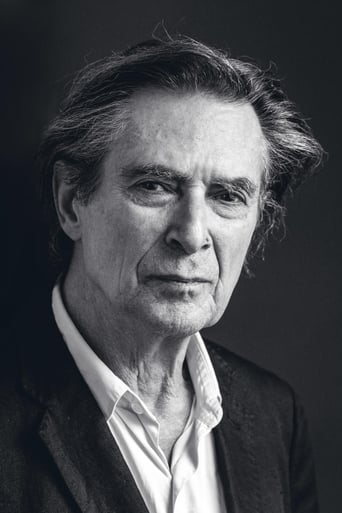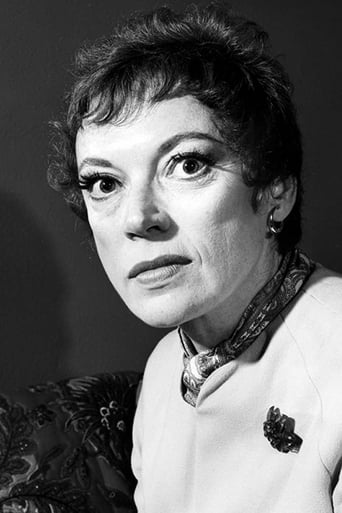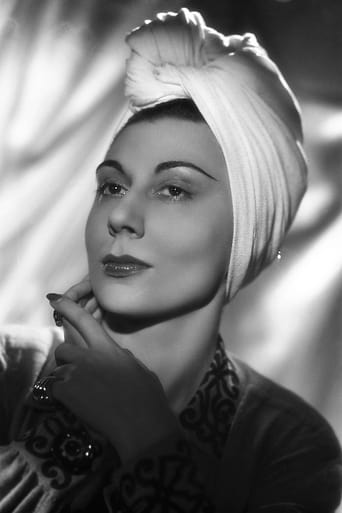MarieGabrielle
Perhaps, to be fair, I should re-watch the film, but at this point although it was a decent satire, there are so many more informative and entertaining films and books on this subject.The film has some interesting scenes, and references to the emptiness and transitory nature of the profession as we see the documentary filmed on the streets of London. Grayson Hall ("Night of the Iguana")has an interesting cameo.Overall, it seems the modeling industry is too complex, and variegated to be successfully depicted on film. Films such as "Unzipped" and "Seamless" touch on the subject. Television shows such as Darren Star's "Models Inc." can only graze the surface of a very moneyed and unpredictable business.If you are truly interested in an expose on the modeling industry, you may want to read "Model" by Michael Gross, senior writer at Esquire and former fashion columnist for the New York Times. Former high fashion model Marie Helvin has also written "Catwalk", which proves very informative on this subject as well.
Graham Greene
At its heart, this is a blistering satire on the ideas of fashion and celebrity within the world of 1960's Paris, but more importantly, can be seen as a treatise on the extended themes of identity, personality and love. More obviously than that, however, the film can and should be seen as an exercise in pure cinematic style and an extension of the world created through art, music and fashion, in which the traditions and ideals of the pre-war generation were completely eroded, giving way to a world alive with ideas and radical free-thinking. The film reflects this notion throughout, becoming an extension of its own world as the filmmakers revel in moments of visual imagination, farce and philosophy, and all backed by a dizzying sense of post-modern abstraction that seems directly lifted from the iconic, early 60's work of director Jean Luc Godard.Given the plot, themes and cinematic iconography, obvious parallels could be drawn with Godard's first masterpiece Une femme est une femme (1961), with the film flaunting ideas of post-modernism and self-reflexivity, whilst offering a playful narrative that looks at issues regarding gender, identity, equality and love. Throughout the film, director William Klein brazenly mixes elements of cartoon satire - with the absurd photo shoots and pretentious critics who invent words for the silliest of fashions - with more jarring bursts of cinéma-vérité inspired docudrama, with the film within a film and the always interesting notion of a self-aware narrative that is continually commenting on itself! With this, we can see yet another strong sense of Godardian abstraction, with the further influence of films like Vivre sa Vie (1962), Le Mepris (1963) and Pierrot le fou (1965) becoming apparent in the melange of post-modern ideas, both visual and textual. However, despite some of these more radical ideas, the plotting of the film and the overall reliance on character and intent are incredibly simple; creating a film that is bold, imaginative and intellectually stimulating, but also a great deal of fun.The concept of the film revolvers around three central characters; the titular American fashion model currently taking Paris by storm; the faraway Prince Charming desperate to engineer a meeting with the model; and a middle-aged TV producer who sets out to lampoon Polly on his show, "Who Are You?", but eventually ends up falling madly in love. Both of the male characters view Polly as a dull cipher devoid of character, and indeed, these are the very same qualities that make them fall in love; that masculine idea of the perfect woman - stylish and beautiful, but devoid of personality and opinion. As the film continues, we discover more about Polly as a person and begin to see the formation of a definite personality that ultimately dwarfs the men in her life, showing them up to be shallow, outdated bores out of step with the more radical social changes currently taking place. In this respect, you could possible view the film as an early feminist manifesto, as Polly, faced with the choice between the wealthy Prince and the learned intellectual, instead decides to live life for herself.The previous reviewer who dismissed the film seems to have missed the point somewhat. Although this clearly is a work of satire on the very broadest of levels, the focus goes much further than the fashion industry - and the (then) vibrant mid 60's scene - to incorporate broader notions of social status, gender issues and the widening generation gap. It isn't meant to be taken entirely seriously, with the unconventional music sequences, outlandish costumes, imaginative approach to editing, design and composition, and a mid-film segment of Gilliamesque animation, all intended to delight as opposed to disarm! If anything, I would say that the film is something of a precursor (in tone) to Jean-Pierre Jeunet's frothy character study Amelie (2001), but again, filtered through the lens of Godard circa 1961. For me, the joy of the film, with its light references to society and art, politics and sociology, really captures a mood and an atmosphere and, above all else, a visual experience, that is really second to none.This is the only films of Klein's that I have seen so far, although I'm now desperate to see his subsequent films, Mister Freedom (1969) and The Model Couple (1978). The images presented here are stunning in their pop-art abstraction, reminding me of elements of Toshio Matsumoto's later film Funeral Parade of Roses (1969) and even Godard's political satire La Chinoise (1967), with the bold use of texture, design and the iconic compositions. This is to be expected from a celebrated photographer turned filmmaker immersed in the vibrant world of 60's Paris, however, there's much more to the film that simply gloss and imagination. The performances are all incredibly well-judged, from the enigmatic and unconventionally beautiful Dorothy McGowan as Polly, to the fine support from Jean Rochefort, Sami Frey, Grayson Hall and Philippe Noiret, who all manage to balance the elements of satire and abstraction, without becoming two-dimensional caricatures.Some will obviously take issues with certain elements of the style, particularly anyone who isn't fond of early Godard or the broader aspects of the French New Wave; though, if you approach the film with an open mind and the right frame of reference the rewards are limitless. I saw the film last month at the BFI Southbank with a packed audience and the entire crowd were laughing and appreciating the jokes and enjoying that unique and imaginative sense of style, which climaxes with a wonderfully Roland Topor designed credit sequence and a catchy French pop title song. Who Are You, Polly Maggoo? (1966) is simply, without question, a great piece of film-making; a fast, funny and entirely flippant forgotten masterpiece that still stands as an exceptional work of comic-satire, pop art and pure cinematic expression.






